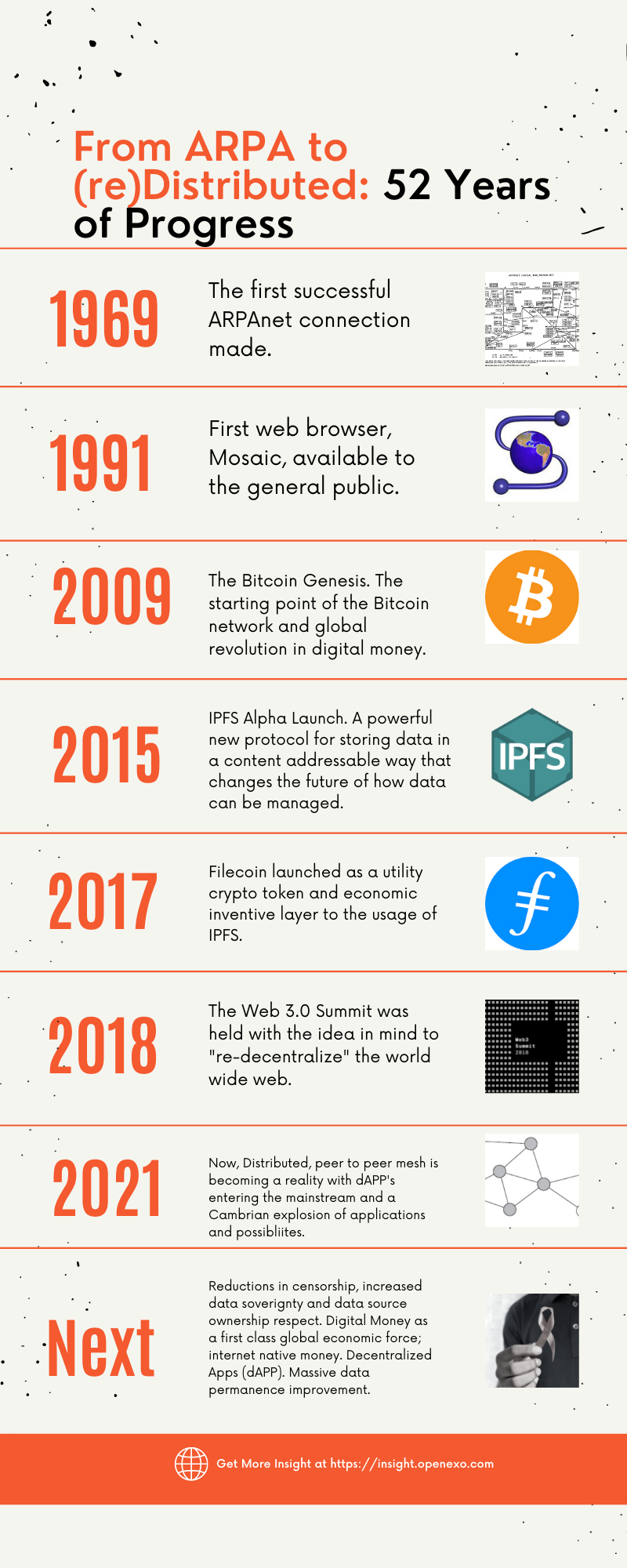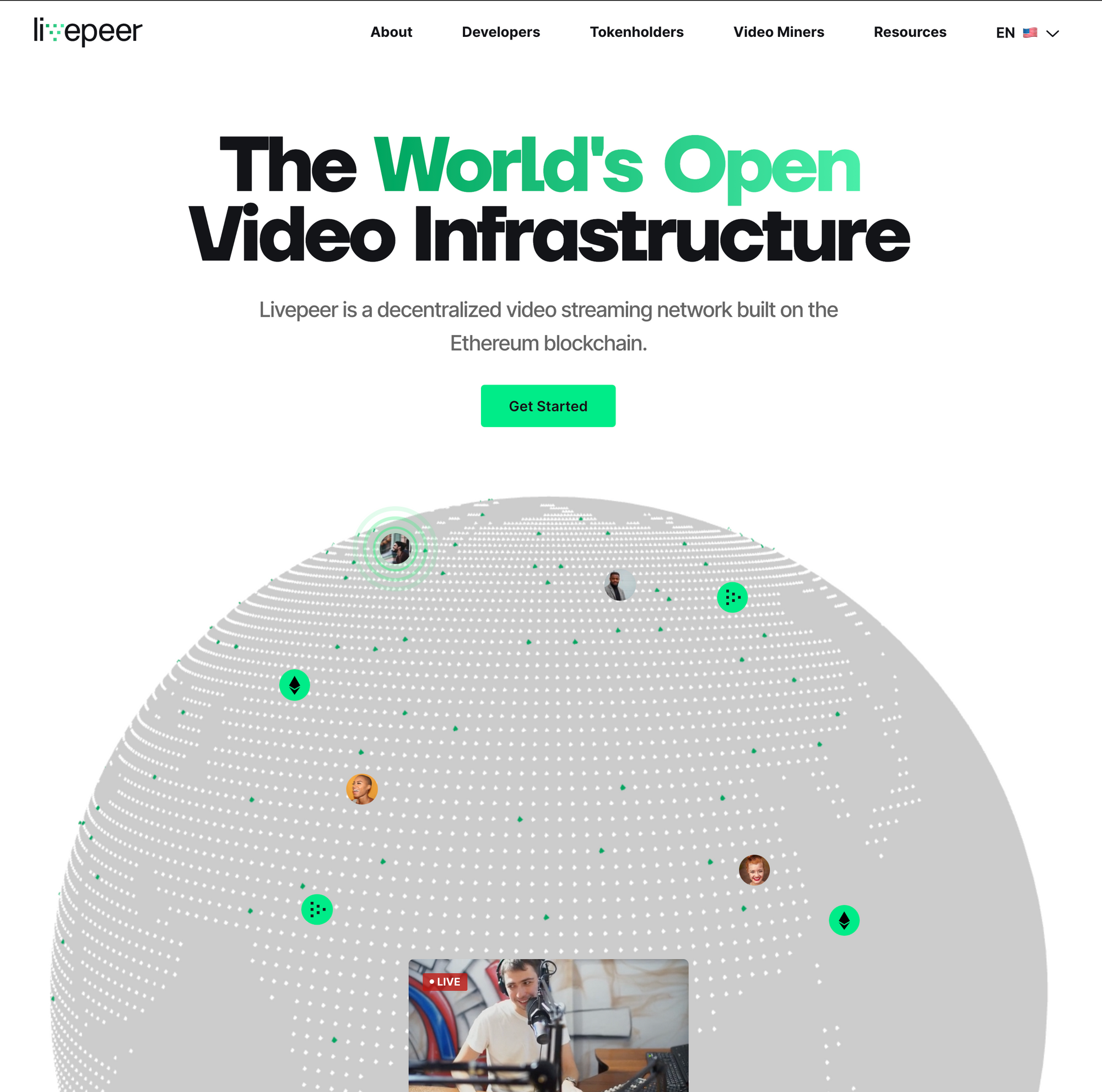
The Future is Peer to Peer
A critical trend to understand right now is at the heart of what people often call web3. Web3 is, in effect, the true decentralization of the world wide web and internet.
A Brief History
It was 52 years ago, on 29 October 1969, when the first successful ARPAnet connection came online. January 1991, 30 years ago, the first World Wide Web (“WWW”) browsers became available to the general public. The WWW was “conceived and developed to meet the demand for automated information-sharing between scientists in universities and institutes worldwide.” Before that, all modems SLIP/PPP connections, gopher servers, and direct-dial bulletin boards. Now, 52 years after that first connection and the entire world changing in two generations, we see the emergence of genuine peer-to-peer networks and protocols.

A critical trend to understand right now is at the heart of what people often call web3. Web3 is, in effect, the true decentralization of the world wide web and internet. Decentralization is a natural phenomenon. But, it does take time. It is like water that can wear a deep canyon into solid rock or an ocean that can pound those same rocks into the smallest grains of sand. Decentralization of the web will not stop.
Censorship and Decentralization
One example of web3 in motion and the importance of such technologies is the Catalonia Independence Movement. Upon holding the independence referendum in 2017 from Spain, the Spanish government tried diligently to block and censor many forms of content. Especially the websites with the information about the referendum. So, the Catalan government moved the website over to the IPFS network accessible via the ipfs.io gateway. From an article by Phoebe Poon on Medium, "The Spanish government blocked gateway. Ipfs.io the next day, but people can still access the website through other nodes, such as ipfs.io. People are also setting up remote nodes to maintain information flow to fight back on the Spanish government censorship." The utilization of these technologies turned into a game of whack-a-mole. Shut down one, and two more would pop up, like the mythical hydra. So, via various social networks and sharing of nodes, services like IPFS, and related technologies, the information continued to propagate. People with something to say or speech to protect could disarm a form of censorship in ways not possible on a centrally controlled network. When combined with peer-to-peer mesh networks, which we will have but is a topic for another day, there is a democratizing effect.
The emergence of peer-to-peer data streaming with solutions such as Livepeer, which is a decentralized challenger to YouTube, is another example. It remains whether distributed protocols like Livepeer can unseat or go toe to toe with long-established players like Alphabet/Youtube.

The Technologies to Watch
Let's explore some of the technologies. These are just entry points. Web3 is a broad and deep subject that takes time to grok.
Projects like IPFS are where the action is. These are the technologies that sites like LivePeer are using right now. Hardly anyone, statistically speaking, looks there because it's too technical for comfort. But, when you encounter that discomfort, that is when you should dive deeper.
IPFS stands for InterPlanetary File System. IPFS is, from their website, "A peer-to-peer hypermedia protocol designed to preserve and grow humanity's knowledge by making the web upgradeable, resilient, and more open." It has not achieved the full ambition of its name just yet, but it will in time. What is essential for the moment is that everything stored on IPFS gets a unique identifier called a content identifier ("CID"). That works a little like the URLs we are all familiar with for web pages, but any data. This idea of the CID sounds simple, but it is not. It is revolutionary. A deeper dive into this subject would make this post uncomfortably long. I encourage you to visit ipfs.io and learn more.
Filecoin is a blockchain-based cryptocurrency created for the long-term incentivization of the storage of our precious data. From Protoschool's website, Filecoin is a distributed storage network powered by a cryptocurrency backed by cryptographic proofs. Filecoin stores over 8 EiB; that's ExiBytes. For comparison, all the words ever spoken by all humans who ever lived are estimated at about five(5) Exabytes. From Kyles Converter, we also learn that "An exbibyte contains 10246 bytes, this is the same as a binary exabyte. It is similar but not equal to the common exabyte (decimal) that contains 10006 bytes." For now, just knowing that an Exabyte is huge and an Exibyte is a little bigger. If you think you want to take a deep dive, it's free at Protoschool with the Filecoin course.
A Look Ahead
The pace of change is unrelenting and disruptive. Humans are wired for change and can prepare for it, but they abhor loss. Those who can master and do master these peer-to-peer tools and gain agency and domain over their data will have a probabilistic edge in the future compared to those who do not.
As IPFS does become interplanetary, the human data sphere will expand lockstep with human expansion into the solar system. You'll have no trouble accessing your online course from your Mars-based IPFS node.
Filecoin and IPFS are very fast-growing peer-to-peer data networks. They leverage a host of technologies to function. Most of which did not exist five years ago. On 21 March 2021, the data storage was reported as 3.17 EiB from 1592 providers(aka Miners). Today, as of 25 July 2021, it is reported as 8.068 EiB provided by 2748 providers! The economic incentivization layer, FIL, has seen a significant rally. That kind of growth in only four months, over 2x, is astounding, as are the overall numbers.
Networks like Filecoin and IPFS raise essential questions about the ownership of data. It presupposes that we will see significant shifts that could rock the very foundations of trillion-dollar businesses like Facebook, Google, Apple, and others. Look forward to future articles on these topics.
Update - 20 August 2021
A short video on this same subject with a live demo of new technology running on IPFS and Filecoin.
Cover image Photo by NASA on Unsplash

ExO Insight Newsletter
Join the newsletter to receive the latest updates in your inbox.








